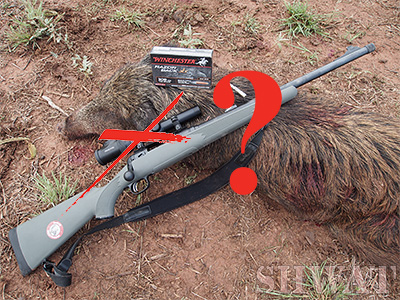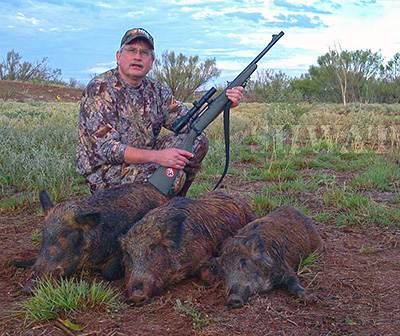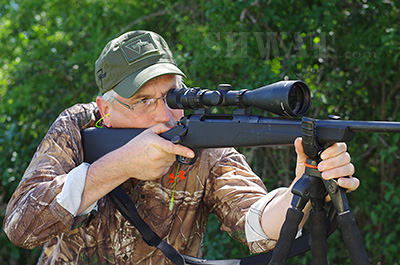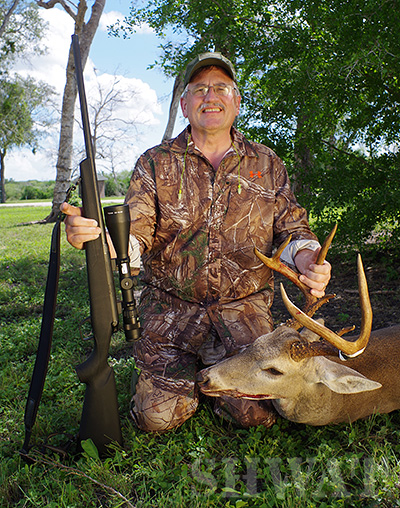
A couple years ago, I received some criticism from an article I published on hog hunting. At the time, it seemed like your standard throw away gripe that pops up on Facebook and forums all the time. But I’ve heard the same criticism many times since, some of it directed at me, much of it aimed at other writers and hunters, and it goes like this: “Your hunting scope or optic isn’t supposed to cost as much as your rifle, and certainly not more than your rifle. Never. Ever.”
The original gripe concerned a hog hunt of mine in West Texas a few years ago. One of the rifles I used on that hunt was a Savage 11/111 Hog Hunter chambered in .308 Win. Readers had no problem with the moderately-priced bolt action. What got some folks upset was my scope, a Z6i 1-6×24 mm made by Swarovski.
“Of course he killed pigs,” one of the criticizers commented. “Hell, he used a $2K scope!”
For the record, the Savage 11/111 could be had for $450 to $500. According to an Internet search, Swarovski no longer makes the Z6i I used, having moved on to a second generation of the optic. But at the time, yes, it was all of a $2,000 scope.
What I took away from the above comment, and the other comments I have since read and heard over the last three years, is that an expensive scope is some sort of unfair advantage. Even worse, hunters using an expensive scope on a relatively inexpensive rife have committed a very dumb financial and quality mis-match.
 I have to disagree. In fact, I think more hunters should consider mounting an expensive scope on an inexpensive rifle, if personal budgets allow for the expenditure, of course.
I have to disagree. In fact, I think more hunters should consider mounting an expensive scope on an inexpensive rifle, if personal budgets allow for the expenditure, of course.
When I was a kid growing up in the Midwest, gun deer season was the hunt of the year. The deer hunters I knew all used roughly the same rifle-to-optic pricing formula. Whatever your rifle cost, the scope should cost half or less. The unspoken belief here was that a $300 rifle was well matched by a $100 to $150 scope because the quality of the two items was about equal. You’d be crazy to spend $400 on the scope, went this thinking, because the rifle could never live up to the higher quality optic.
The times, I believe, have very much changed where this is concerned, even if the attitudes haven’t.
I really can’t say how good or bad a bargain-priced hunting rifle could or would shoot 30+ years ago. What I can say—based on shooting dozens of new rifles of every price category over the last several years—is that many of the rifles lower-priced rifles on the market today can shoot as well as rifles three and four times their cost.
Case in point, that Savage 11/111 Hog Rifle which laid in groups of around .75 of an inch at 100 meters all day long.
Then, there’s the Remington 783, a no-frills bolt action Remington debuted a couple years ago in the standard deer hunting calibers. The suggested retail is $451, but they are sold at the Bass Pro Shops and Cabela’s of the world for $380 or less. The first time I shot the rifle, I put three rounds of 30-06 into a circle the size of a quarter at 100 yards. About six months later I had another chance to use a new-in-the-box 783, also chambered in 30-06, and it was soon laying in sub-MOA groups.
 Once it was sighted in and I felt comfortable with it, I took the 783 on a deer hunt. A cull deer hunt, to be exact, where the South Texas ranch I was hunting had hundreds of extra deer tags to use to get its booming deer herd numbers under control. I killed 13 deer and three hogs with this rifle, and only missed once—a shot I pulled high.
Once it was sighted in and I felt comfortable with it, I took the 783 on a deer hunt. A cull deer hunt, to be exact, where the South Texas ranch I was hunting had hundreds of extra deer tags to use to get its booming deer herd numbers under control. I killed 13 deer and three hogs with this rifle, and only missed once—a shot I pulled high.
Atop the 783? An $1,100 Trijicon AccuPoint 2.5-10x56mm scope.
True, I could have killed many of those same animals with a $200 scope. Many of the shots were 100 yards or less, in very good light, with the deer or hog standing broadside. But could I have made that shot in the pre-dawn gloom on the black sow as she trotted 140 yards away over a recently plowed field that was pretty much the same color as she? Or how about the 310 yard shot I made on a doe standing in the shade under a huge oak tree?
I don’t think so. I’ve used lower-priced scopes and they can work very well—at ranges under 200 yards and in well-lit conditions. But at distance and in questionable light, I want the expensive scope, the one that pulls in more light and gives me a crisp, edge-to-edge image at 250 yards and better. The expensive scopes hold zero much better and can take a decent beating with no ill effect, too.
What it comes down to is this. The accuracy of rifles has improved so noticeably, that many of today’s $400 rifles are as accurate as their $1,200 cousins. So, even with the less-expensive makes and models, a cheap scope simply won’t let you the hunter get the most out of that rifle.
 Unfair advantage? I thought one of the main objectives of hunting was to make as quick and as clean a kill as possible. An optic that lets me do that isn’t unfair. If anything, it should be mandatory. For example, if you have a cheaper scope that really can’t do the job at over 200 yards, and that trophy buck steps out three football fields in length away, are you going to take the shot?
Unfair advantage? I thought one of the main objectives of hunting was to make as quick and as clean a kill as possible. An optic that lets me do that isn’t unfair. If anything, it should be mandatory. For example, if you have a cheaper scope that really can’t do the job at over 200 yards, and that trophy buck steps out three football fields in length away, are you going to take the shot?
I know a lot of deer hunters that would, poke and hope at the once in a lifetime deer. And in the process they may well put a bullet into that buck’s mid-section or rump, which would kill the animal—after it had run a mile and died in a great deal of pain, likely to never be found.
Every hunter has to make these decisions for him or herself. If you have a 150 or 200 yard rifle and scope set up, and you are willing to keep all your shots to those distances or less? That’s great and I consider you an ethical hunter.
And if you have a hunting rifle that can drop a bullet into a four-inch circle at 300 yards, meaning it will easily go into the kill zone of a deer, and that accuracy is deliverable thanks to your scope–which cost twice or more what the rifle did?
I think that is money very well spent.



Hear, hear. The best tools for the job are the best tools for the job, there is no wisdom in mounting a cheap scope on an accurate (albeit inexpensive) rifle. The hunter’s job is to harvest the animal as humanely and quickly as possible, and quality optics aid tremendously in making that possible within a broader spectrum of parameters.